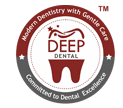What are x-rays?
X-rays are a form of radiation They create an image by penetrating an area the dentist wants to examine and striking film or a digital sensor on the other side. Dense tissues (teeth and bone) are lighter (white on X-ray images because fewer x-rays reach the film or sensor. Soft tissues (the cheeks and gums) are darker because more x-rays reach the film or sensor.

Looking for excellence in oral health care-ask for Digital Dental X-ray.
Why ask for Digital Dental X-ray?
Dental technology has improved the way dentists practice. Dentists can diagnose and treat many dental issues just through visual oral examinations. However, there are many problems in the teeth, gums and jaw that can’t be seen with the naked eye and therefore may go undetected. This is where dental x-ray comes in for quick, safe and more convenient diagnosis. It’s not just helping dentists diagnose your dental problems but with additional software programs dentists can compare current images to previous images of the same tooth, helping them find even the smallest changes in your tooth’s structure even before any symptoms are present. This saves time, money, unneeded discomfort and helps prevent more serious health problems. With issues such as cancer, tumors and gingivitis, the biggest problem comes down to time. If a dentist uses Digital Dental X-ray, he or she can come up with a quick and effective treatment plan. They can also reveal malignant tumors before they expand and become inoperable. Dental X-ray can easily save a life.
![]()
Is the Digital X-Ray different from tradition X-ray?
The physical process for digital radiography is actually similar to traditional dental X-rays that use film: With Digital X-ray, your dentist inserts a sensor into your mouth to capture images of your teeth but that’s where the similarities between conventional and Digital Dental X-rays end. The digital sensor is electronic and connected to a computer. Once the X-ray is taken, the image is projected on a screen for your dentist to view.
There are several benefits to using Digital X-ray over traditional film X-rays:
Less Radiation:-
The equipment used in Digital X-ray exposes dental patients to much less radiation. In fact, Digital X-rays use up to 90% less radiation than film X-rays. While conventional Dental X-rays are relatively safe, digital radiography is an excellent option for those who take X-rays on a regular basis or for those who are concerned about radiation.
Shorter Dental Appointments:-
Digital X-ray also shorten your dental appointment. With traditional dental X-rays, you’ll have to wait while your dentist develops the film. With digital X-ray, the sensor develops the picture almost instantly and projects it onto a computer screen right before your eyes.
Higher Quality Images:-
Digital X-rays can be enlarged or magnified for a better visual of the tooth’s structure. Brightness, contrast and color can also be adjusted, allowing your dentist to see small cavities easier. If you need a hard copy of your X-ray, digital images can also be printed out. While traditional x-ray films are viewed actual size.
Transferring Dental Records:-
Digital images can be e-mailed to a dental specialist for immediate review to get a second opinion. As more clinics are turning to electronic patient charts, computers may eliminate the need to mail dental records altogether.
Environmentally Friendly:-
Digital dental X-rays are better for the environment. With digital radiography, no chemicals are used to develop film. Now that you realize how safe dental x-rays are, here are 25 important reasons why you should have regular dental x-rays.
- To determine the presence of hidden decay
- TO determine the presence of dental absces
- To determine the presence of cysts
- To determine the presence of tumors (benign or malignant)
- To determine whether to remove primary teeth
- To determine if complete complement of permanent teeth is present
- To determine condition of root canal filled teeth
- To determine condition of deep restorations
- To determine if decay present in abnormal areas
- To determine condition of supporting bone
- To determine presence of impacted teeth
- To determine if extra (supernumerary) teeth are present
- To determine depth of periodontal abscess
- To determine strength of teeth for support for fixed bridge
- To determine amount of bone destruction in periodontal disease
- To determine reasons for pressure sensitivity
- To determine presence of fractured roots
- To determine location of abscess in multi-rooted
- To determine presence of ill-fitting restorations teeth
- To determine presence of foreign bodies To locate fistula track
- To examine bridge field
- To locate hidden calculus
- TO Observe root involvement with sinuses
- To determine presence of abnormally shaped roots

